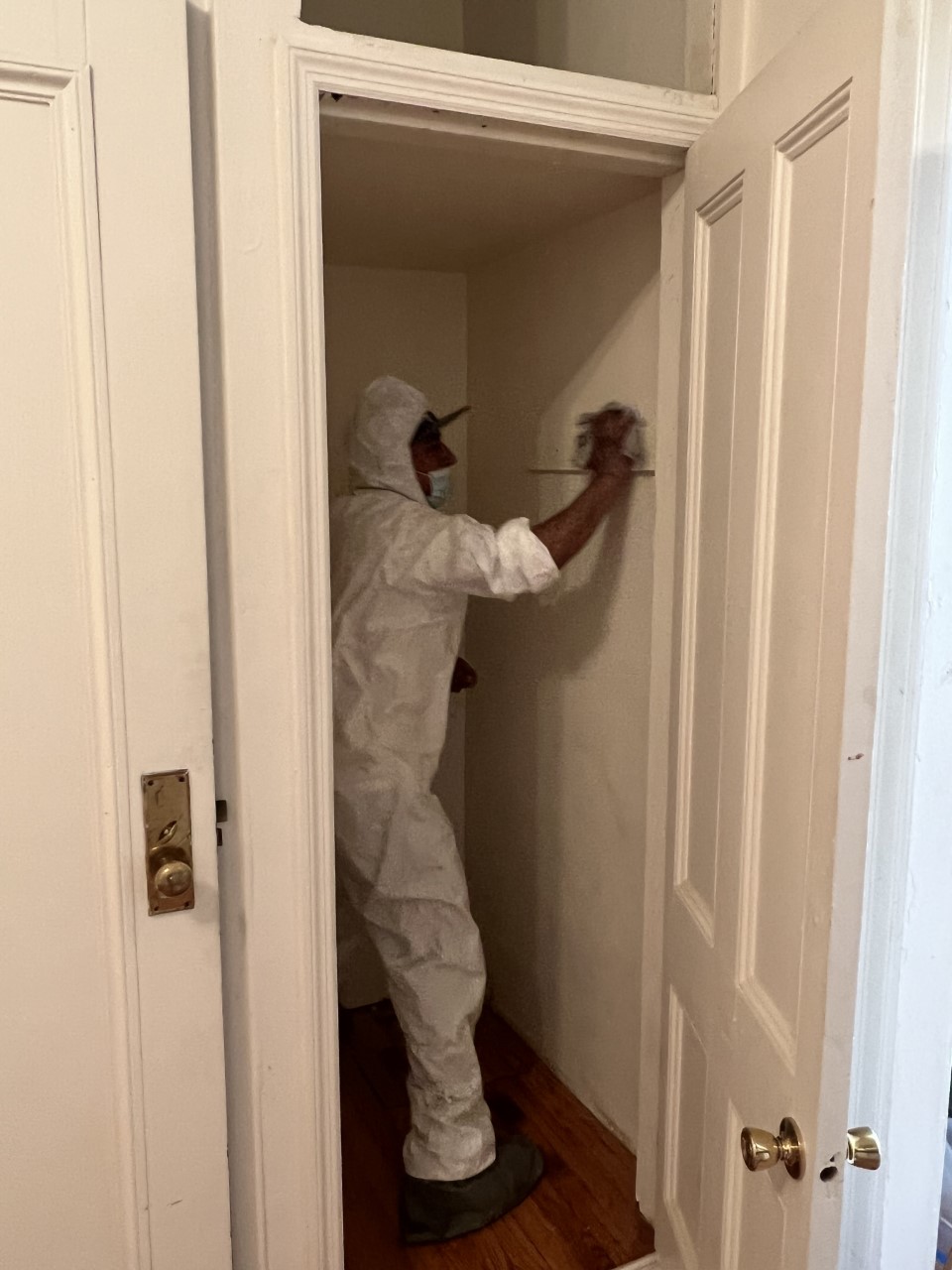NYC Lead Removal Contractors-- Get Safe and Effective Providers
NYC Lead Removal Contractors-- Get Safe and Effective Providers
Blog Article
Step-by-Step Process for Successful Lead Infraction Removal
Attending to lead infractions demands a careful and organized approach to make certain both safety and regulative compliance. The journey starts with the specific discovery and assessment of contamination sources, making use of cutting-edge analysis tools. Following this, adherence to federal and state policies is paramount to formulating an efficient removal strategy. Such a plan should detail the specific approaches and timelines for activity. The actual remediation requires proficient workers to carry out these strategies while purely complying with security procedures. But what occurs after the removal is completed? The answer exists in comprehending the important post-remediation strategies that make certain long-term safety and security and neighborhood wellness.

Discovery and Evaluation
Detection and analysis are important steps in the remediation of lead offenses. To ensure a reliable remediation procedure, it is vital to perform a comprehensive exam of the atmosphere where possible lead direct exposure exists.
This consists of reviewing the extent and intensity of contamination, as well as determining populaces at threat, particularly kids and expecting females. The collected information should be meticulously recorded to sustain the advancement of an efficient remediation method.
Moreover, it is important to prioritize areas with the greatest levels of contamination and those that position the greatest health dangers. Effective interaction with stakeholders, including residential property owners, residents, and public wellness authorities, is important for guaranteeing that all events are notified about the searchings for and the subsequent actions required for removal. This preliminary detection and evaluation phase prepares for an effective lead offense remediation process.

Lawful and Regulatory Compliance
Browsing the landscape of lawful and governing compliance is a critical facet of successful lead offense remediation. Conformity makes sure not only the safety and security of afflicted populations yet also the reliability and lawful standing of the company accountable for removal.
This includes precise paperwork of all removal activities to demonstrate compliance. Failing to stick to these regulations can result in extreme fines, including significant fines, lawful activity, and reputational damage.
Engaging lawful specialists concentrated on ecological legislation can help with navigating these intricacies. Normal training and accreditation for all workers associated with the remediation process are also mandatory to guarantee adherence to security and regulatory criteria. By focusing on legal and governing compliance, organizations can efficiently minimize threats and attain an effective removal result.
Planning the Remediation
Effectively planning the remediation of lead infractions begins with a complete assessment of the contaminated site. This first assessment must include an in-depth website examination to recognize the level and focus of lead contamination. Comprehensive sampling and laboratory evaluation are extremely important check out this site to produce a precise contamination account. This data-driven technique makes certain that remediation efforts are suitably targeted and effective.
Once the contamination is mapped, a danger evaluation need to be conducted to assess prospective wellness risks to humans and the setting. Lead Violation Removal in NYC. This analysis should consider factors such as exposure pathways, population susceptability, and eco-friendly influences. The insights gathered will develop the basis for choosing an ideal remediation method
Subsequently, setting clear, attainable goals for the remediation job is crucial. These purposes must line up with governing criteria and stakeholder assumptions to make certain conformity and area approval. Establishing a thorough removal strategy that lays out approaches, timelines, and source allocation will help with an organized strategy to the clean-up process.
Additionally, it is necessary to engage with stakeholders early and preserve clear interaction throughout the preparation phase. This consists of educating regional areas, getting essential licenses, and coordinating with regulative agencies to make sure all legal and procedural needs are satisfied. A well-crafted removal strategy not just attends to the contamination successfully however also constructs count on and collaboration among all events included.
Performing the Remediation
With a well-structured removal strategy in location, the focus shifts to the actual implementation of the removal activities. This stage entails setting in motion the needed sources, consisting of skilled employees, customized devices, and top notch products. Begin by plainly marking duties and obligations to make sure responsibility and smooth coordination among employee.
This includes setting up control locations to avoid lead dirt and debris from dispersing, as well as utilizing air filtration systems to keep air high quality. Make use of methods such as damp scraping, chemical stripping, or encapsulation, depending on the extent and location of the contamination.
Throughout the remediation procedure, conduct periodic assessments and air click here for more quality checking to ensure compliance with governing requirements. Reliable communication with stakeholders, including homeowner and residents, is critical to keep them notified of progression and any unexpected growths. By meticulously complying with these steps, the remediation tasks can be implemented efficiently and successfully, ultimately mitigating lead threats.
Post-Remediation Techniques
Post-remediation strategies play an important role in making certain the long-lasting success of lead offense remediation initiatives. These methods incorporate ongoing tracking, upkeep, and area education and learning to stop future lead exposure and make certain a safe environment.
First, routine tracking is necessary. This involves routine screening of the previously influenced areas to ensure that lead degrees stay within secure limitations. Homeowner ought to develop a routine for these tests, preferably in collaboration with certified ecological experts.

Third, educating the area plays a critical role in maintaining the benefits of removal. Locals and residential or commercial property supervisors ought to be informed concerning the dangers of lead direct exposure and the finest practices for preserving a lead-safe setting. Workshops, informative pamphlets, and neighborhood conferences can be efficient devices for disseminating this info.
Verdict
Successful lead infraction remediation calls for a comprehensive, systematic method including detection and evaluation of contamination, adherence to legal and regulative requirements, careful preparation, and More hints efficient implementation of removal efforts. This systematic process emphasizes the importance of thoroughness and vigilance in addressing and mitigating lead contamination.
Report this page